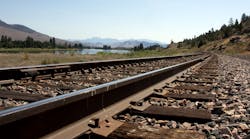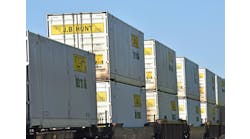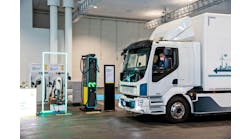A recent decision from the Surface Transportation Board (STB) is seen as helping to forestall years of confusion and possible litigation over the scope of the Clean Water Act’s (CWA) application to the interstate rail network.
“The agency provided a detailed, well-reasoned analysis of the legal issues and effectively signaled that any effort to impose state point source permitting on railroads would be held to be preempted as interfering with the free flow of interstate commerce,” observes attorney Paul R. Hitchcock of the law firm of Holland & Knight.
The controversy boils down to language incorporated into the CWA when it was enacted in 1972. The law prohibits the discharge of any pollutant from a “point source” into navigable waters and imposes environmental permitting requirements on certain facilities that are considered to be these “point sources” of pollution.
At the crux of the issue is that even the CWA recognizes the sheer complexity of trying to regulate millions of potential point sources. The enormous variation in discharges by facilities throughout the country makes setting a single standard virtually impossible. As a result, the CWA cedes enforcement of this portion of the act to be carried out through permitting by the states instead of attempting to rely on the U.S. Environmental Protection Agency (EPA) to enforce it.
The railroads filed a petition for declaratory order with the board after a district court in 2016 found that a rail car moving across the country can be considered a point source, potentially subject to state environmental regulation. The case was settled before the issue of federal preemption could be fully argued before it. On Dec. 30, the board denied the declaratory order request, but instead chose to issue a decision stating its position on the issue.
“The resulting uncertainty created the specter of every state establishing its own standards for the emission of many different materials from a rail car,” Hitchcock points out. “Indeed, a state might establish different standards at different locations within that state.”
In its decision, the STB agreed with the railroads’ position, noting that if the permitting requirements were to be applied to discharges from the “incidental operation of rail cars in transit,” it would likely lead to a patchwork quilt of regulatory constraints that would impose tremendous burdens on railroads operating in interstate commerce that are preempted by the federal law creating the STB.
“A single rail shipment can easily pass through a half dozen, or even a dozen, states. That rail car’s next trip may pass through a dozen different states,” Hitchcock explains. “A shipper needs the flexibility to load any suitable car to any destination within the contiguous 48 states, Canada and Mexico. And, railroads have few routing options—sometimes none.”
In addition, a large percentage of the national railcar fleet is owned or leased by shippers, he adds. “One state might seek to enforce rules against the car owner, while another might look to the operating railroad as the responsible party. The opportunities for complexity and possible conflict in regulation are endless. Even one state adopting an overly restrictive standard could bring commerce in some lanes to a halt.”
The board quoted its own enabling law, in which Congress explicitly assigned it the duty of promoting the goals of the Commerce Clause of the U.S. Constitution. Congress charged the STB with responsibility for providing uniform regulation of rail transportation and to ensure the free flow of interstate commerce, “particularly by preventing a patchwork of differing regulations across states."
In Hitchcock’s view, “The STB's position as the primary national regulator of railroad rates and practices will likely have an increasingly important role in resolving these kinds of questions of conflicting state and local regulatory requirements and the national interest in the free flow of commerce and uniform transportation regulation.”




